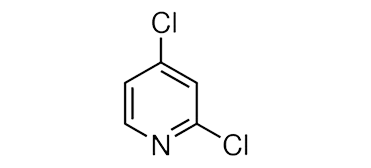
The field of pharmaceutical research continually evolves, driven by the demand for innovative treatments and drug development. One compound that has garnered significant attention is 2,4-dichloropyrimidine. This halogenated pyrimidine derivative exhibits unique properties, making it a vital intermediate in the synthesis of various therapeutic agents. Below, we explore the multifaceted roles of 2,4-dichloropyrimidine and its contributions to the advancement of medicinal chemistry.
Introduction to 2,4-Dichloropyrimidine
2-4 dichloropyrimidine is a heterocyclic compound that belongs to the pyrimidine family. Its structure, featuring chlorine substitutions at the 2nd and 4th positions of the pyrimidine ring, makes it highly reactive and adaptable for chemical modifications. This adaptability has made it a cornerstone in pharmaceutical research, especially in drug discovery and development.
Role of 2,4-Dichloropyrimidine in Pill Synthesis
1. Anticancer Agents
2,4-Dichloropyrimidine serves as a precursor in the synthesis of numerous anticancer drugs. Compounds derived from this molecule often exhibit strong cytotoxic activity against cancer cells. For instance:
- Pyrimidine-based kinase inhibitors, pivotal in targeted cancer therapy, often employ 2,4-dichloropyrimidine as a core building block.
- Its derivatives have been integrated into pyrimidine nucleoside analogs, which interfere with DNA synthesis in rapidly dividing cancer cells.
2. Antiviral Compounds
The compound’s role in antiviral drug synthesis cannot be understated. Derivatives of 2,4-dichloropyrimidine are actively used to combat viruses like:
- HIV: By inhibiting reverse transcriptase enzymes.
- Hepatitis B and C: Through structural analogs that disrupt viral replication.
3. Anti-inflammatory Drugs
Research has revealed that 2,4-dichloropyrimidine derivatives can modulate inflammatory pathways. These molecules are integral in designing novel therapies for:
- Rheumatoid arthritis.
- Inflammatory bowel diseases.
- Other chronic inflammatory conditions.
Chemical Properties That Drive Versatility
1. Electrophilic Substitution
The chlorine atoms in 2,4-dichloropyrimidine render it an ideal candidate for electrophilic substitution reactions. These reactions allow the introduction of diverse functional groups, enabling the synthesis of complex molecules tailored for specific pharmacological activities.
2. Stability and Reactivity
2,4-Dichloropyrimidine strikes a balance between chemical stability and reactivity. Its stability under standard conditions ensures that it remains intact during storage, while its reactivity supports versatile synthetic transformations in laboratory settings. Specialty chemicals are unique formulations designed for specific applications, often characterized by their performance and functionality rather than bulk production.
Emerging Applications in Medicinal Chemistry
1. Development of New Antibiotics
With rising antibiotic resistance, there is a pressing need for novel antibacterial agents. Derivatives of 2,4-dichloropyrimidine are being explored as potential antibiotics due to their ability to inhibit bacterial enzymes essential for survival.
2. Central Nervous System (CNS) Disorders
Recent studies highlight the potential of 2,4-dichloropyrimidine derivatives in treating CNS disorders, such as:
- Alzheimer’s disease.
- Parkinson’s disease.
- Epilepsy. These derivatives often act by modulating neurotransmitter pathways or reducing oxidative stress in neuronal cells.
Industrial Applications Beyond Pharmaceuticals
While its primary focus remains in drug development, 2,4-dichloropyrimidine also finds applications in:
- Agrochemicals: As a precursor for herbicides and pesticides.
- Material Science: In the development of specialty polymers and dyes.
Advantages of Using 2,4-Dichloropyrimidine
1. Cost-Effective Synthesis
The availability of efficient synthetic routes for 2,4-dichloropyrimidine makes it an economically viable option for large-scale production.
2. Wide Range of Derivatives
The compound’s versatility enables the creation of a broad spectrum of derivatives, each with unique biological activities. This diversity is essential for addressing various therapeutic challenges.
3. Compatibility with Modern Techniques
2,4-Dichloropyrimidine is compatible with advanced synthetic techniques, including:
- Microwave-assisted synthesis.
- Green chemistry methods, minimizing environmental impact.
Future Prospects in Pharmaceutical Research
As pharmaceutical research advances, the importance of intermediates like 2,4-dichloropyrimidine will only grow. Key areas of future exploration include:
- Personalized Medicine: Designing derivatives tailored to individual genetic profiles.
- Nanomedicine: Incorporating 2,4-dichloropyrimidine derivatives into nanoparticle-based drug delivery systems.
- Sustainability: Developing eco-friendly synthetic pathways for its production.
Conclusion
2,4-Dichloropyrimidine stands as a testament to the power of chemical innovation in pharmaceutical research. Its unique structure, chemical properties, and adaptability have cemented its position as a cornerstone in the development of groundbreaking therapies. As we continue to push the boundaries of medicinal chemistry, this compound will undoubtedly play a pivotal role in shaping the future of healthcare. Specialty chemical is unique formulations designed for specific applications, often characterized by their performance and functionality rather than bulk production.